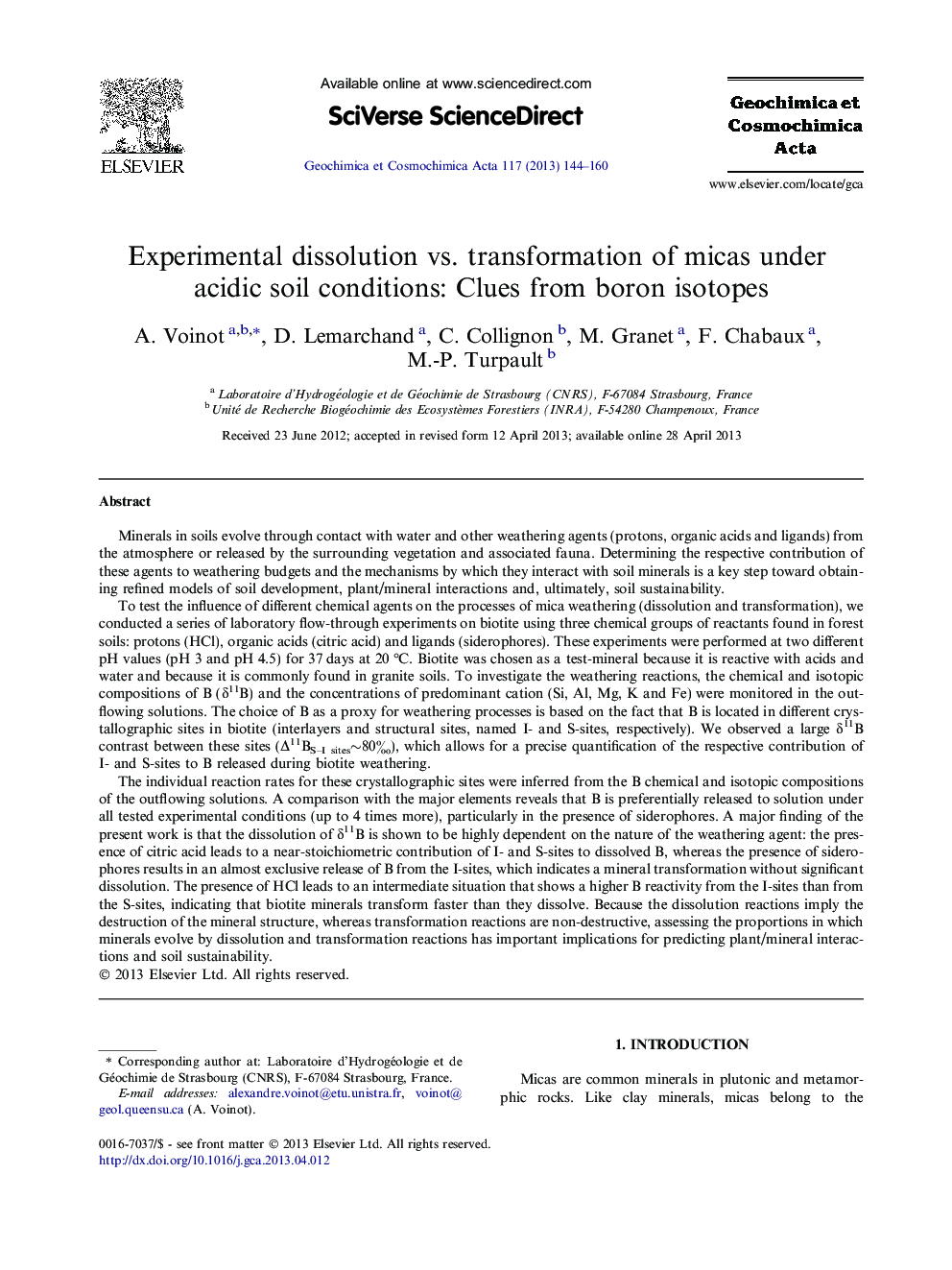| کد مقاله | کد نشریه | سال انتشار | مقاله انگلیسی | نسخه تمام متن |
|---|---|---|---|---|
| 4702365 | 1638040 | 2013 | 17 صفحه PDF | دانلود رایگان |
Minerals in soils evolve through contact with water and other weathering agents (protons, organic acids and ligands) from the atmosphere or released by the surrounding vegetation and associated fauna. Determining the respective contribution of these agents to weathering budgets and the mechanisms by which they interact with soil minerals is a key step toward obtaining refined models of soil development, plant/mineral interactions and, ultimately, soil sustainability.To test the influence of different chemical agents on the processes of mica weathering (dissolution and transformation), we conducted a series of laboratory flow-through experiments on biotite using three chemical groups of reactants found in forest soils: protons (HCl), organic acids (citric acid) and ligands (siderophores). These experiments were performed at two different pH values (pH 3 and pH 4.5) for 37 days at 20 °C. Biotite was chosen as a test-mineral because it is reactive with acids and water and because it is commonly found in granite soils. To investigate the weathering reactions, the chemical and isotopic compositions of B (δ11B) and the concentrations of predominant cation (Si, Al, Mg, K and Fe) were monitored in the outflowing solutions. The choice of B as a proxy for weathering processes is based on the fact that B is located in different crystallographic sites in biotite (interlayers and structural sites, named I- and S-sites, respectively). We observed a large δ11B contrast between these sites (Δ11BS–I sites∼80‰), which allows for a precise quantification of the respective contribution of I- and S-sites to B released during biotite weathering.The individual reaction rates for these crystallographic sites were inferred from the B chemical and isotopic compositions of the outflowing solutions. A comparison with the major elements reveals that B is preferentially released to solution under all tested experimental conditions (up to 4 times more), particularly in the presence of siderophores. A major finding of the present work is that the dissolution of δ11B is shown to be highly dependent on the nature of the weathering agent: the presence of citric acid leads to a near-stoichiometric contribution of I- and S-sites to dissolved B, whereas the presence of siderophores results in an almost exclusive release of B from the I-sites, which indicates a mineral transformation without significant dissolution. The presence of HCl leads to an intermediate situation that shows a higher B reactivity from the I-sites than from the S-sites, indicating that biotite minerals transform faster than they dissolve. Because the dissolution reactions imply the destruction of the mineral structure, whereas transformation reactions are non-destructive, assessing the proportions in which minerals evolve by dissolution and transformation reactions has important implications for predicting plant/mineral interactions and soil sustainability.
Journal: Geochimica et Cosmochimica Acta - Volume 117, 15 September 2013, Pages 144–160
